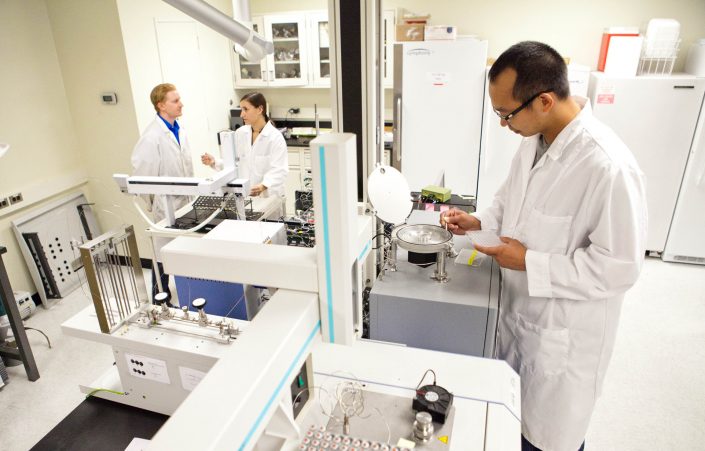$1 million grant to establish premier stable isotope capabilities at A&M

Image: Texas A&M AgriLife
A $1 million grant will help Texas A&M University develop a unique shared mass spectrometry core facility. Researchers said the facility will offer a new approach for predicting petroleum maturation as well as a more cost-effective way to explore and understand biogeochemical processes.
Funding was provided by the Texas A&M University Research Development Fund, which makes strategic investments that support the total Texas A&M research enterprise and catalyze new ventures.
The development of this premier capability is possible through the partnership of the Stable Isotopes for Biosphere Science Laboratory, or SIBS, in the College of Agriculture and Life Sciences, and the Stable Isotope Geosciences Facility, or SIGF, in the College of Geosciences.
“This will provide technology at the forefront of ecology, environment and energy research,” said Thomas Boutton, a Regents Professor in the Department of Ecosystem Science and Management, College of Agriculture and Life Sciences, and a Texas A&M AgriLife Senior Faculty Fellow.
The key team members are a part of several Texas A&M multidisciplinary faculties and have developed collaborative relationships with a diverse cross-section of faculty, staff and graduate students in Texas A&M AgriLife Research and five Colleges on campus.
Leading the efforts in the SIBS lab are faculty members Boutton, Associate Professor Jason West, Associate Professor Jason Vogel and Research Assistant Professor Ayumi Hyodo, all in the Department of Ecosystem Science and Management. Also on the lead team from SIGF are Ethan Grossman, a professor and holder of the Michael T. Halbouty Chair in the Department of Geology; Brendan Roark, an associate professor in the Department of Geography; and Niall Slowey, a professor in the Department of Oceanography, all in the College of Geosciences.
“The funds will primarily support the purchase of new instrumentation, including a gas chromatography combustion/pyrolysis isotope ratio mass spectrometer and a high resolution isotope ratio mass spectrometer for clumped isotopes,” Associate Professor West said. “This expansion will give Texas A&M University research capacity in stable isotope ratio analysis that is unmatched in the state and region.”
The compound-specific mass spectrometer system, to be housed in the SIBS lab, separates and identifies chemical compounds in samples, then measures the stable carbon, nitrogen, oxygen or hydrogen isotope ratios of those compounds.
“This system will provide cutting-edge capabilities to utilize individual molecule isotope ratios as fingerprints of biosphere, geosphere, hydrosphere and atmosphere processes,” West said.
“Some potential applications include reconstructing past climates from hydrocarbons in soil and sediments, identifying soil microbes and their biogeochemical functions, and unraveling food web structure.”
The clumped isotope mass spectrometer, to be housed in the SIGF, measures the relative abundance of molecules with two rare isotopes. This ratio in carbonate rocks and minerals is temperature-dependent and therefore being used as a new technique in geothermometry.
Reconstruction of the precise temperatures at which carbonate rocks, shells or foraminifera were formed will be useful in soil science, geology and oceanography, Research Assistant Hyodo said.
“In addition, this instrumentation would also provide triple oxygen isotope analysis, an emerging tracer for hydrologic and atmospheric research,” she said.
“To our knowledge, neither of the analytical capabilities are available in Texas research institutions,” Hyodo said. “To facilitate use among the Texas A&M community, we will be hosting joint seminars focused on the new applications, training through a methods course, and an international symposium.”
Both stable isotope mass spectrometer systems are expected to be available for on- and off-campus users in 2018, she said.

